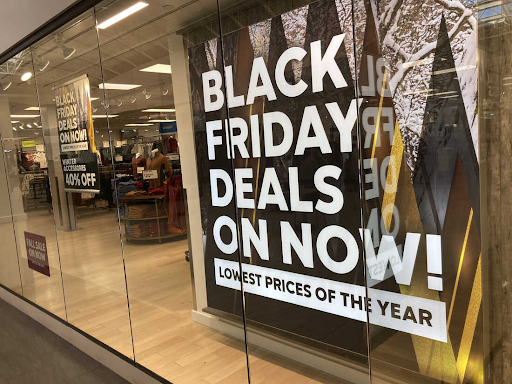Put these tips to good use over the remaining holiday season
Global Black Friday sales have broken records set the previous year. According to data from ConvertSocial, a platform for monetizing social media traffic, U.S. shoppers increased their order volume by 70% and their overall spending by 72% during the Black Friday sale week compared to a typical period.
Much of this increased spending was catalyzed by content creators’ campaigns leading up to the big day. The sales volume of goods and services inspired by influencers exceeded average amounts and demonstrated a growth of 85%, highlighting the value these creators can bring to the table.
Black Friday is Less About Friday and More About the “Golden Week”
A trend that has continued in 2022 is the observation that consumer activity has been more evenly dispersed throughout the entire Black Friday sale period rather than being concentrated on Friday.
Most brands have extended their sale period to include the days leading up to and following Black Friday, creating the “Golden Week” for sales.
In response to this shift in the sale and discount periods, shoppers’ habits have shifted as well. For 2022, there was a 99% increase in orders on Black Friday, but there was also a general 70% uptick in orders throughout the week. So, while the difference in shopping numbers on Friday is less drastic compared to previous years, the overall sales numbers attributed to the Black Friday shopping period prove that the promotional period is still popular with consumers.
Another interesting finding is that the gross merchandise value (GMV, or total value of merchandise sold) increased by 115% on Black Friday, as opposed to the 72% increase for the entire week, meaning that many consumers held off on making their most significant orders until Friday.
This demonstrates the fact that brands were successful in driving shopping traffic on Friday, engaging customers with marketing campaigns that offered the largest discounts on big-ticket or luxury items exclusively on Black Friday.
On average, experts say that Black Friday orders for 2022 have increased anywhere from 2-15%, depending on the category and shopping channel.
Compared to both 2020 and 2021, these numbers represent only a moderate increase. However, seeing even moderate growth amidst the COVID-19 rebound and the current economic downturn is a positive sign.
This year’s Black Friday events proved that customers are still willing to make a purchase if they are already interested and presented with a good deal. ConvertSocial data saw a 23% increase in clickthrough rates to brand websites and shopping marketplaces during the so-called Golden Week, proving that shoppers are ready to buy.
In addition to the boosted clickthrough rates overall, influencer clickthrough numbers were even more impressive. Content creators saw a 34% bump in the number of clicks from their pages to brand websites.
Taking a Closer Look at What Shoppers Were Buying During Black Friday 2022
The top three categories for this year were apparel, home goods and electronics. Surprisingly, fashion and home and garden proved to be the two most popular shopping categories this year; typically, electronics are by far the top sellers for Black Friday.
The data also shows an interesting breakdown of what consumers were shopping for this year. Nearly 30% of shoppers worldwide were most interested in clothing, watches, shoes and accessories, and over 21% sought furniture and goods for their homes and gardens.
Electronics, including smartphones, accounted for roughly 16.4% of Black Friday sales, while toys, games and baby products made up just over 10% of online orders during the sale period.
The online services sector has also taken a more active piece of the “sales pie” in recent years. Some of this popularity can be attributed to the global pandemic, but the interest persists even as the world returns to its “new normal.”
ConvertSocial examined the total volume of online service sales this year and noted that, on Black Friday, event tickets, online services and PC and mobile games held the top three sales positions with 10.6%, 6.8% and 6%, respectively.
In the United States, shoppers largely fell in line with global trends, demonstrating an increased interest in fashion and electronics. However, they spent much more on online games and far less on home goods compared to the rest of the world. In fact, the online gaming industry was one of Black Friday’s top performers in the U.S., attracting 11.5% of all orders in the country.
Content Creators and Cashback Bonuses Are Top Lures For Shoppers
Content campaigns are still growing in effectiveness when it comes to motivating shoppers to place orders. According to ConvertSocial, in 2022 content websites and online media attracted more than 23% of all global sales, and 14.4% of purchases were made through affiliate links.
On top of this, consumers who used offers from cashback services accounted for an additional 20.3% of Black Friday orders, with coupon users coming in at 9% of orders.
Affiliate partner revenues also spiked considerably: globally, creators saw a 51.4% jump in profits and a 72% boost in earnings in the U.S. market.
However, the fierce competition for consumer attention is far from over. With Christmas and New Years’ shopping still ahead, brands and creators must take these Black Friday lessons and put them to use over the remainder of the shopping season to drive traffic using the most efficient channels, mechanics and content styles.
Grit Daily News is the premier startup news hub. It is the top news source on Millennial and Gen Z startups — from fashion, tech, influencers, entrepreneurship, and funding. Based in New York, our team is global and brings with it over 400 years of combined reporting experience.
Credit: Source link


Comments are closed.